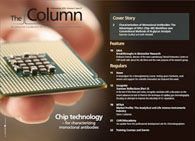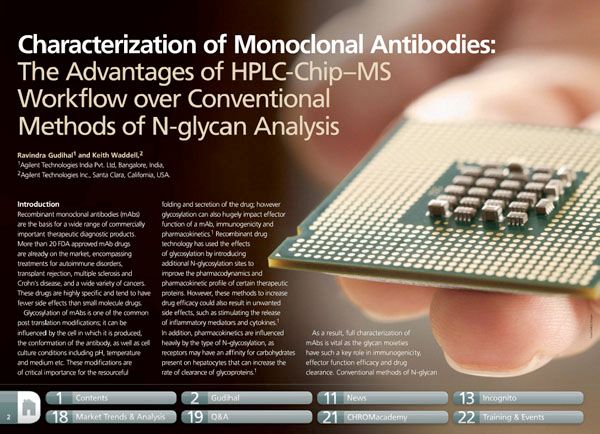Characterization of Monoclonal Antibodies: The Advantages of HPLC-Chip-MS Workflow over Conventional Methods of N-glycan Analysis
The advantages of HPLC-Chip-MS workflow over conventional methods of N-glycan analysis
Full characterization of mAbs is vital as the glycan moieties have such a key role in immunogenicity, effector function efficacy and drug clearance. Conventional methods of N-glycan analysis, such as LC–FLD or CE–FLD, can take two to three days to complete a single analysis. The introduction of HPLC-Chip–MS workflow systems have significantly reduced the total analysis time (including on-chip enzymatic reaction, glycan separation and MS analysis) to tens of minutes. This creates a major productivity enhancement for biopharmaceutical analysis.

New Method Explored for the Detection of CECs in Crops Irrigated with Contaminated Water
April 30th 2025This new study presents a validated QuEChERS–LC-MS/MS method for detecting eight persistent, mobile, and toxic substances in escarole, tomatoes, and tomato leaves irrigated with contaminated water.
University of Tasmania Researchers Explore Haloacetic Acid Determiniation in Water with capLC–MS
April 29th 2025Haloacetic acid detection has become important when analyzing drinking and swimming pool water. University of Tasmania researchers have begun applying capillary liquid chromatography as a means of detecting these substances.
Prioritizing Non-Target Screening in LC–HRMS Environmental Sample Analysis
April 28th 2025When analyzing samples using liquid chromatography–high-resolution mass spectrometry, there are various ways the processes can be improved. Researchers created new methods for prioritizing these strategies.

.png&w=3840&q=75)

.png&w=3840&q=75)



.png&w=3840&q=75)



.png&w=3840&q=75)











